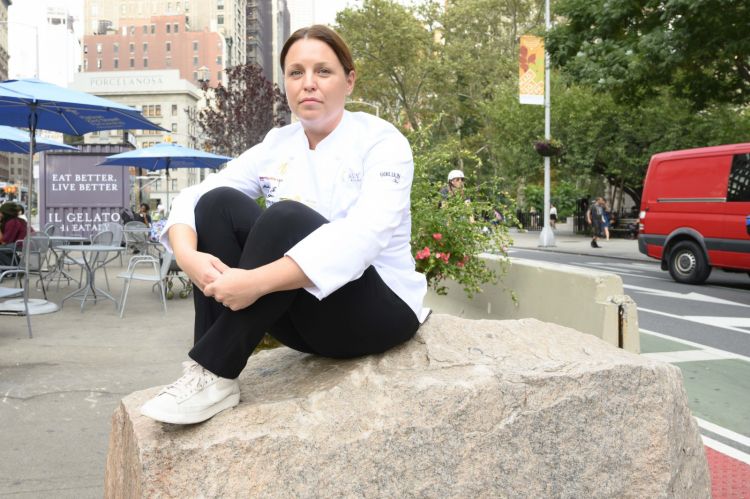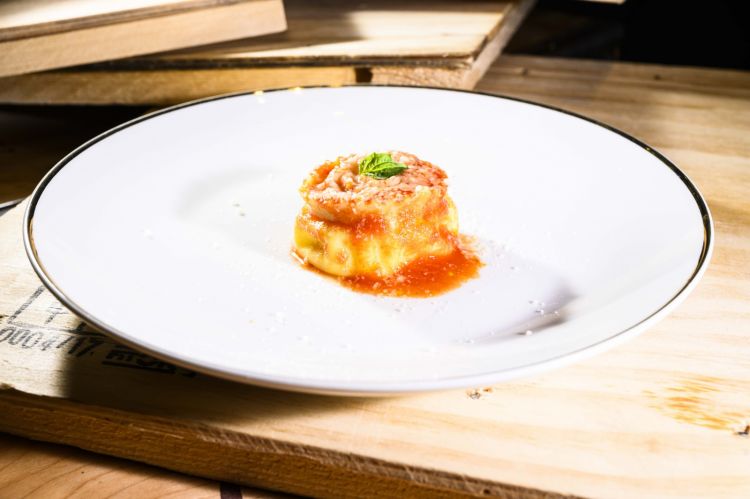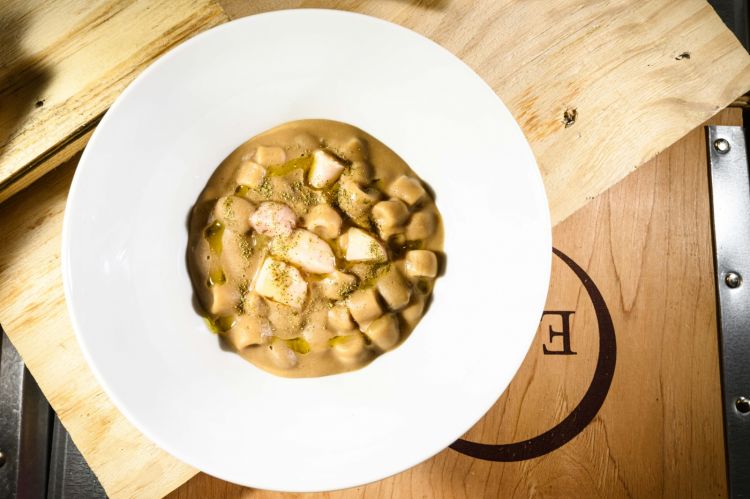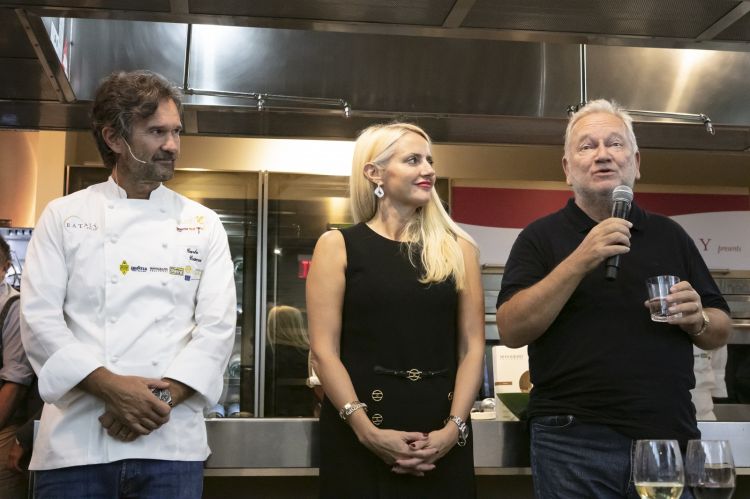«We’re in the Big Apple, we have a fine dining restaurant, we offer traditional Italian cuisine but it surely isn’t our fixation». The second lesson begins with another woman, the first one to run a kitchen awarded with 4 stars from the New York Times (which counts almost more than the Michelin guide here): Melissa Rodriguez, executive chef at restaurant Del Posto, Joe and Lidia Bastianich’s war machine with 56 cooks and 2,200 square metres. The dish is called Crown filled with tomato and Grana Padano.
To make the fresh pasta she first turns on the kneading machine: “00” flour, egg, salt, and oil. Then she adds some boiled milk to the dough, she whisks it to soften it, and then she rolls it like a rezdora, offering advice on process and humidity. She then cuts out the rectangles, adds the cream filling of Grana Padano, closes the pastry in half, then rolls the stripe so as to form a Crown, the format of pasta used in this dish.
Second step, the sauce: stir fried garlic, plus basil and tomato sauce. The crown of pasta is cooked in boiling water, then she finishes the cooking in the pan with the sauce. One is enough to create a satisfying and succulent tasting.


Crown filled with tomato and Grana Padano
When you say “pasta” of course you have to summon
Riccardo Felicetti, partner of
Identità New Yorksince its first edition: «The word
pasta encloses in its letters all its meanings:
p stands for
people,
a for
air,
s for (hi)
story,
t for
territory e
a for
acqua, that is to say water. Each letter holds a world, our world in Predazzo». This is the premise to the lesson given by
Carlo Cracco, another constant presence in these ten years in New York.
«Tonight I’m not going to cook here but I’ll tell you about a special recipe», the chef from Vicenza (who has settled in Milan two decades ago), begins in English. «When I was child, I was interested in recipes, flavours. When I started to work in the kitchen, I tried to add new ideas, unusual touches, a different something to famous recipes». As in this case, with
Pasta e fagioli, [Pasta and beans] «a recipe which we had already discussed with my mentor
Gualtiero Marchesi. But it was a version that people did not understand at the time, perhaps because it was too innovative».
In this case, this is part of a wider research: «Often, at the restaurant in the
Galleria, at the end of the meal and before coffee, there’s someone who asks us for a brilliant ending. In these years we’ve tried to meet their needs by interpreting some great Italian classics, especially pasta: amatriciana, carbonara, cacio e pepe… We always try to make something different from the classic features of these recipes, in terms of flavours and cooking».
«I thought of Pasta e fagioli because it’s a very popular recipes, of Venetian origins. In the winter we serve it boiling hot; in the summer, lukewarm. It’s often so thick that if you dip the spoon, it will stand». Details follow: «We only use borlotti beans and we don’t use pork – in the old days, you’d put all sorts of parts in the recipe, bones, rind, perhaps with cheese and lots of different vegetables…». The coup de theatre here is different: «We add raw bone marrow – one of my most representative ingredients for the past 25 years – cooking it with the heat of the cream of borlotti. I use it to give a fat component instead of the butter, more natural».

Pasta e fagioli with bone marrow

With Dominga Cotarella and Clement Vachon
For the pasta, he chose spelt ditalini from Felicetti, a very appreciated format, which discretely swims in a cream of borlotti. «We finish with a drop of extra virgin olive oil and some dehydrated rosemary». It makes people moan with pleasure at the end of the meal: «At first they are surprised. Then they taste it and appreciate it. So much that we’ve extended the experiment to many other recipes». You only need to be patient and wait for just before the coffee.
Translated into English by Slawka G. Scarso